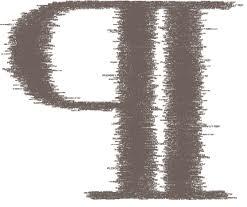[icopyright horizontal toolbar]

Do you lie awake at night fixated on your paragraph structure? Well probably not, but I’ll make the assumption that you want your writing to look good on the page or screen, and therefore care at least a little about paragraphs.
Paragraphs express ideas. The classic ratio is one idea per paragraph. The idea leads off the paragraph, and is typically followed by one to three detail sentences that flesh out the first sentence. Ready to move onto the next idea? Start a new paragraph!
Ever notice the difference between first and second paragraphs? The first paragraph that follows an intrusion, such as a heading or subheading, is typically not indented, because the intrusion establishes the break in continuity normally furnished by the indentation.
How Much Should You Indent?
When you do indent, you have a number of options:
1) Use a modest indentation that is based on your typeface. For instance, if you are using an 11/13 typeface (11 point type set with 13 point leading) a conservative typographer would use one em, or 11 points. If really conservative, you can cut an em in half to form an en, in this case 5.5 pt. An en is the smallest amount you’d ever want to use for indentation. You could also throw caution to the wind and use a lead (in this case, 13 pts) as your indentation amount. Any one of these amounts is just fine for your paragraph indentation, and all relate organically to the font or leading you have chosen.
2) Do you ever outdent? Yup, it’s a valid form of expression: instead of indenting a paragraph, start it in the left margin space, once again by a width equal to an em, en or lead. To my eye, this technique looks a little precious and detracts from content. But others find it perfectly acceptable, especially when you jazz it up with oversized marginal letters from a different fontset.
3) A drop line is an indent justified to the right so that it aligns just beyond the end of the previous line of text. This variant looks silly to me, but perhaps works well for poetry.
Blanks or Markings?
Most times, an indentation is simply blank space. That does the job nicely. But if you are dealing with an unnumbered list, each item is a new paragraph, and you’d like to set off the paragraphs for easy identification. Bullets (•), boxes (■), and that favorite of the legal profession, the pilcrow (¶) are all viable alternatives to the plain blank space.
Blocks are subdivisions of text akin to the paragraph, but are usually surrounded by blank lines. This blog is written using blocks rather than indented paragraphs. We’ll have more to say about blocks in our next Fonts and Typography blog.
This article rendered in Crimson 12pt.
Copyright 2011 Eric Bank, Freelance Writer